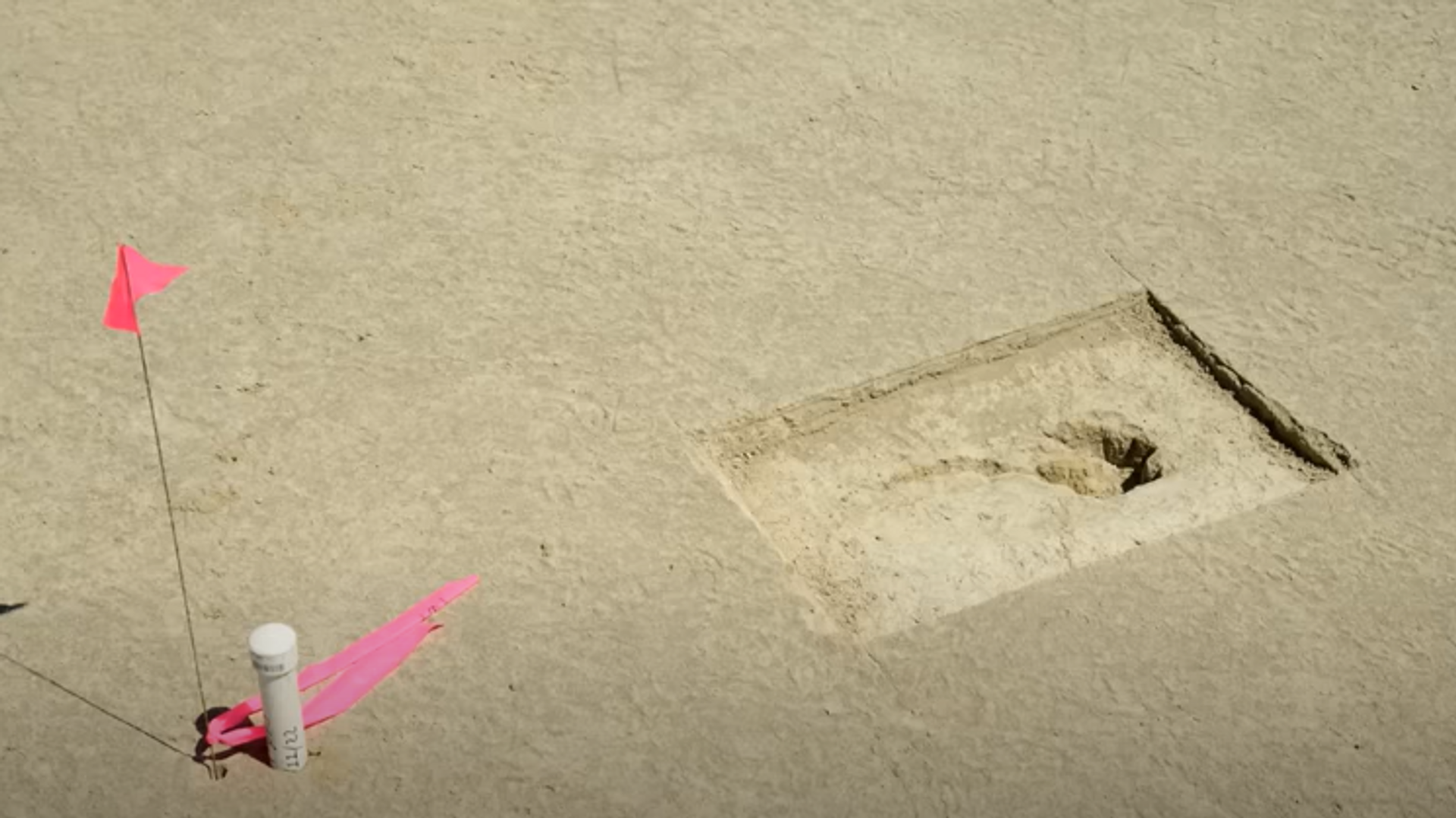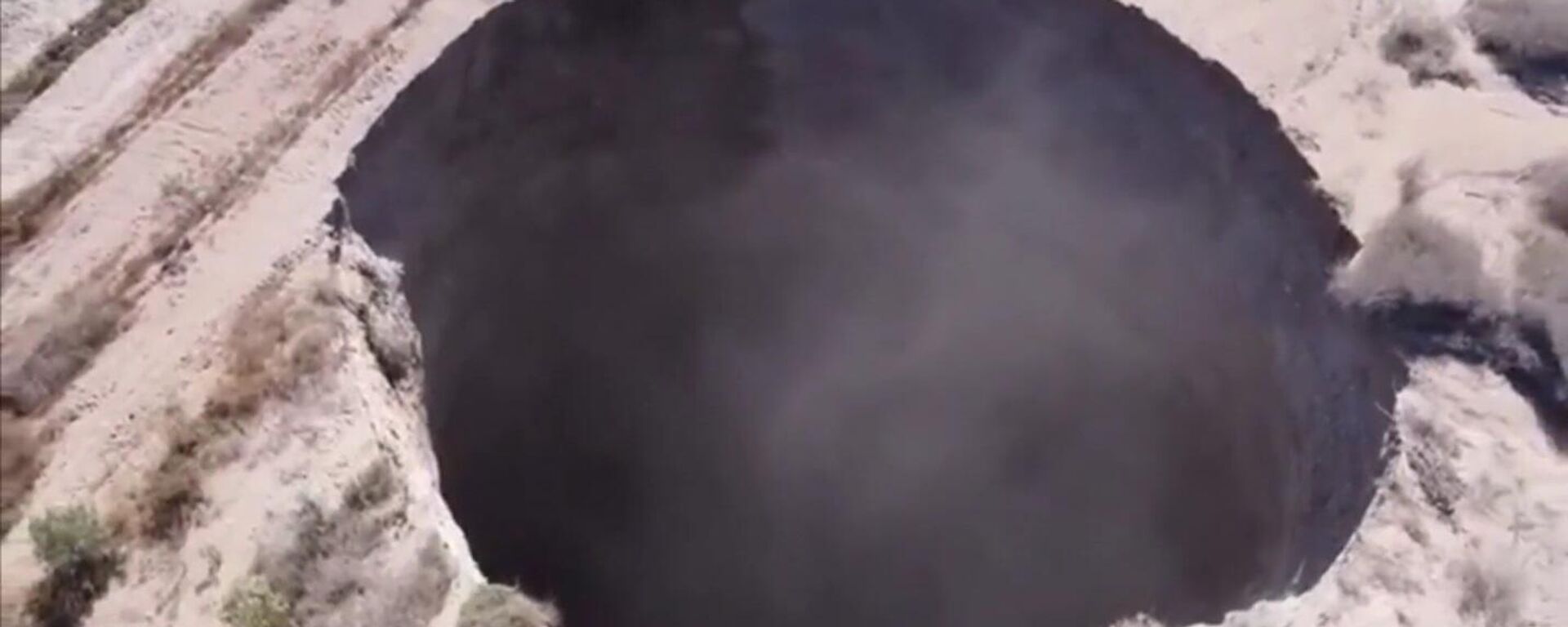https://sputnikglobe.com/20220804/archaeologists-find-ghost-footprints-in-utah-1098092143.html
Archaeologists Find ‘Ghost Footprints’ in Utah
Archaeologists Find ‘Ghost Footprints’ in Utah
Sputnik International
Footprints left behind by bare human feet may date back as far as 10,000 to 12,000 years ago, when what is now known as Utah was still a vast wetland. At least... 04.08.2022, Sputnik International
2022-08-04T02:01+0000
2022-08-04T02:01+0000
2022-10-19T20:18+0000
ice age
study
science & tech
archaeology
https://cdn1.img.sputnikglobe.com/img/07e6/08/04/1098092323_44:0:789:419_1920x0_80_0_0_21be81de9b85554ae29261d8bb72764d.png
The mysterious footprints were discovered in the alkali flats—also referred to as salina or a salt flat, which is essentially a dried-out desert lake where high levels of salt are often found—about 80 miles west of Salt Lake City.The footprints were found in what used to be a shallow river bed at the Utah Test and Training Range, which is used by the U.S. Armed Forces to test experimental aircrafts and other military equipment. The site is about 1 million acres, so it was by “pure chance” that the 12,000-year-old footprints were discovered, says Tommy Urban, a research scientist at Cornell University.Archaeologists and researchers are hailing the discovery for enabling a deeper understanding of what life was like for humans in this part of the world thousands of years ago, long before the North American continent was invaded by the Spanish in 1565. At the end of the Pleistocene Epoch—or the “Great Ice Age”—humans made their first contact with North America, according to current archeological evidence.Similarly, in September of 2021, another study led to the discovery of 60 footprints in White Sands National Park dated between 21,000 to 23,000 years old, making the New Mexico footprints the oldest evidence of human existence in the Americas. That finding helped researchers discover that the use of tobacco through smoking, chewing, and snuffing was about 10,000 years earlier than previously thought.The land where the footprints were found used to be covered by a large, salty lake that slowly dried out following the end of the Pleistocene Epoch, leaving behind large amounts of salt sediment. The area, in between being an ancient lake and a current-day salt flat, would have been a wetland where humans were residing. As these humans from 12,000 years ago walked along the shore of the wetlands, their feet made imprints in the sand, becoming permanent over time."But under the sand was a layer of mud that kept the print intact after infilling,” he added.The footprints, from both September’s study and early July’s, were examined using ground-penetrating radar (GPR). At first, just a few footprints were visible, with Urban first seeing them from outside his car window. The ghostly footprints are best seen following rainfall, because as the surrounding sediment dries out, the prints remain visible after they trap water.“We have long wondered whether other sites like White Sands were out there, and whether ground-penetrating radar would be effective for imaging footprints at locations other than White Sands, since it was a very novel application of the technology,” said Urban in reference to the prints that were discovered in New Mexico. “The answer to both questions is ‘yes.’”
https://sputnikglobe.com/20220802/watch-mysterious-giant-sinkhole-near-copper-mine-sparks-investigation-in-chile-1098036648.html
Sputnik International
feedback@sputniknews.com
+74956456601
MIA „Rossiya Segodnya“
2022
News
en_EN
Sputnik International
feedback@sputniknews.com
+74956456601
MIA „Rossiya Segodnya“
Sputnik International
feedback@sputniknews.com
+74956456601
MIA „Rossiya Segodnya“
ice age, study, science & tech, archaeology
ice age, study, science & tech, archaeology
Archaeologists Find ‘Ghost Footprints’ in Utah
02:01 GMT 04.08.2022 (Updated: 20:18 GMT 19.10.2022) Footprints left behind by bare human feet may date back as far as 10,000 to 12,000 years ago, when what is now known as Utah was still a vast wetland. At least 88 footprints were discovered, which archeologists say belong to both adults and children from the Paleo-Indian period.
The mysterious footprints were discovered in the alkali flats—also referred to as salina or a salt flat, which is essentially a dried-out desert lake where high levels of salt are often found—about 80 miles west of Salt Lake City.
The footprints were found in what used to be a shallow river bed at the Utah Test and Training Range, which is used by the U.S. Armed Forces to test experimental aircrafts and other military equipment. The site is about 1 million acres, so it was by “pure chance” that the 12,000-year-old footprints were discovered, says Tommy Urban, a research scientist at Cornell University. Archaeologists and researchers are hailing the discovery for enabling a deeper understanding of what life was like for humans in this part of the world thousands of years ago, long before the North American continent was invaded by the Spanish in 1565. At the end of the Pleistocene Epoch—or the “Great Ice Age”—humans made their first contact with North America, according to current archeological evidence.
“We found so much more than we bargained for,” said Anya Kitternman, the cultural resource manager at Hill Air Force base, who called the footprints a “once-in-a-lifetime discovery.”
Similarly, in September of 2021, another study led to the discovery of 60 footprints in White Sands National Park dated between 21,000 to 23,000 years old, making the New Mexico footprints the oldest evidence of human existence in the Americas. That finding helped researchers discover that the use of tobacco through smoking, chewing, and snuffing was about 10,000 years earlier than previously thought. The land where the footprints were found used to be covered by a large, salty lake that slowly dried out following the end of the Pleistocene Epoch, leaving behind large amounts of salt sediment. The area, in between being an ancient lake and a current-day salt flat, would have been a wetland where humans were residing. As these humans from 12,000 years ago walked along the shore of the wetlands, their feet made imprints in the sand, becoming permanent over time.
“Based on excavations of several prints, we’ve found evidence of adults with children from about five to 12 years of age that were leaving bare footprints. People appear to have been walking in shallow water, with the sand rapidly infilling their print behind them, much as you might experience on a beach,” said lead researcher
Daron Duke, an archaeologist with Far Western Anthropological Research Group, who was with Urban when they discovered the footprints.
"But under the sand was a layer of mud that kept the print intact after infilling,” he added.
The footprints, from both September’s study and early July’s, were examined using ground-penetrating radar (GPR). At first, just a few footprints were visible, with Urban first seeing them from outside his car window. The ghostly footprints are best seen following rainfall, because as the surrounding sediment dries out, the prints remain visible after they trap water.
“We have long wondered whether other sites like White Sands were out there, and whether ground-penetrating radar would be effective for imaging footprints at locations other than White Sands, since it was a very novel application of the technology,” said Urban in reference to the prints that were discovered in New Mexico. “The answer to both questions is ‘yes.’”


